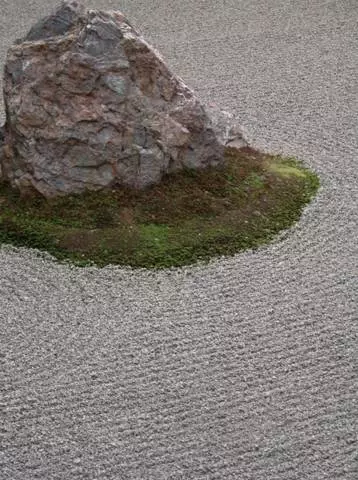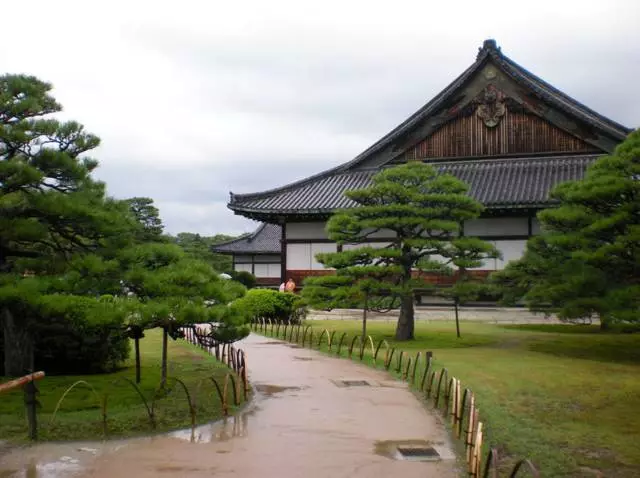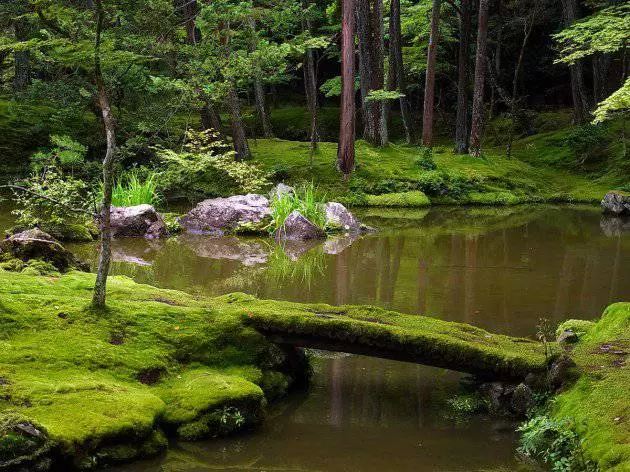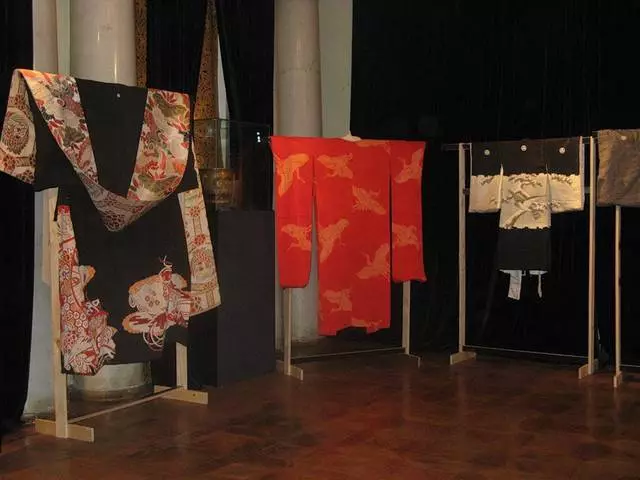The unique city having more than two thousand temples and palaces on its territory, and this is not to mention the rest of the attractions and interesting places. And all this you will see in Kyoto. A lot of attractions can be visited by independently, without overpayment. Basically, these are various castles and temples, which are perfectly combined with the natural beauty of the city, forming ideal mergers.
Renan-Ji / Ryoan-Ji Zen Garden Stones Garden.
The garden is located on the territory of the Zen Buddhist Temple Röan-Dzhi, which is owned by the Rindzai school. This is exactly a sign attraction not only by the city of Kyoto, but also of the whole Japan, which built Katsumoto Hosokawa in 1450.

Well, think that here you will see gorgeous plants and flowers, because it is a dry landscape garden, which is made of white sand and black stones. Here visitors and many locals are spending time meditating and contemplating beautiful. Stones, which in the garden - 15, are framed by soft green moss, which gives them a special appearance. In addition, there is some feature in the garden - in whatever point you have not stood, you see only 14 stones, and all 15 can only be seen from above. Temple, along with the garden, included in the UNESCO World Heritage List.
Silver Hincaku Ji / Ginkaku-Ji Pavilion.
The silver pavilion was built in 1482, which served as a country house of Sögun Asikaga Yoshimitsa. Initially, the pavilion should have been covered with silver, but due to the military, the ruin did not do this. Beautiful is not only the pavilion himself, but also the territory surrounding it. There is a garden from sand and moss, in which you can also meditate or simply admire it with beauty and accurate lines.

The pavilion himself consists of a tea room and a hall, from which Kyoto night sky can be believed. Address: 606-8402 Ginkaku-Cho, Sakyo-Ku. The cost of the entrance ticket is about 500 yen.
Castle Nijo / Nijō-Jō.
The castle is considered one of the main attractions of Kyoto, since this is the residence of Sögunov of Tokugawa. The complex consists of several buildings and gardens, the territory of which is about three hundred thousand square meters. The castle was built as many as 25 years since 1601, and the castle was open to visits only in the 1940s. The castle, in fact, is very beautiful and well maintained, both the inner interior and an external environment.

If you raise your heads, you can see gorgeous gold-plated carved ornaments, in which Pavlinov can be considered, as well as other animals and plants inherent in Japanese style. Inside the wooden frames are covered with paper with beautiful drawings.

And the tracks along which the visitors of the castle can take walks, surround just the perfect trees. Therefore, the cost of visits is about 600 yen.
The castle is also included in the UNESCO World Cultural Heritage List since 1994. Therefore, it is not surprising that the rules of visits here are very strict, and they need to be carefully. It concerns and walks in the gardens, so it is worth considering.
Address: 541 Nijojo-Cho, Horikawa-Nishiiru.
Saihoji Sayogeji Moss Temple. The temple is known to tourists as a KokeDera temple, or the moss temple. And this is no accident, because here you can see more than one hundred and twenty of his species. It's amazing that initially it was a villa Prince, and then only the shrine became a temple. Here, tourists will be able not only to stroll through the territory of the temple and its surroundings, but also to take part in religious actions. For example, copy the Sacred Buddhist Scriptures, or take singing lessons.

You can get here either with sets of transfers on the subway (about 40 minutes) or by taxi.
National Museum Kyoto. The museum was previously called the Imperial and received visitors since 1897. This is the oldest museum of artistic subjects in all Japan.
At this time, visitors can see about twenty expositions of different directions. For example, illustrated scrolls, ceramics, sculpture, calligraphy, metal products and others.

I especially liked the exposition, which is dedicated to the visual art of the era of Mommem and the Edo era. There are things that are already many hundreds of years, so tourist interest is just unimaginable.
Address: 527 Chaya-Cho, Higashiyama-Ku. The cost of the input ticket varies depending on the exhibition presented.
Kimono Museum. Here you can get acquainted with the history of the development of Japanese national clothing - Kimono. Sometimes, kimono is created for more than a year, so many families transmit it from generation to generation. I first learned that they were never erased, but shifting rice paper and stored as a relic.

In the museum, visitors are offered to paint on their own, and with paintings, you will follow the master and give just invaluable advice. Then the handkerchiefs can be taken with you, and at the arrival of home to give a close person, or to keep yourself in memory of the trip to Kyoto. Sometimes, the cost of kimono simply has no price, or the cost will translate a couple of million dollars.
Temple of Nandsendzi. This is the most important temple of Zen in the whole country. The history of his occurrence, roots goes to the thirteenth century, when the temple was considered a villa of the Japanese emperor Cameoma. The temple enjoys great tourist popularity, since many are interesting not only the external and inner species of the temple, but also its amazing gardens of stones that resemble tigers and their kids.
In addition, on the sliding doors of the temple, the pictures of the famous School Kano are depicted, among which are tigers on gold sheets, as well as a tiger drinker. The temple itself is made in an amazing, luxurious style of Sinden-Dzukuri, so it is a real heritage of all Japan, which the authorities are carefully stored.
By the way, here it ends the famous Path of philosopher , the origins of which begin at the temple of Ginkakuji, or a silver pavilion. The path was named after Philosopher Nisida Kitaro, which was among the most famous philosophers of Japan. Every day, going to work, the philosopher walked this way and pondered about life.
Today, along the famous path there are shops and restaurants, as well as small cafes, so it is simply once.
